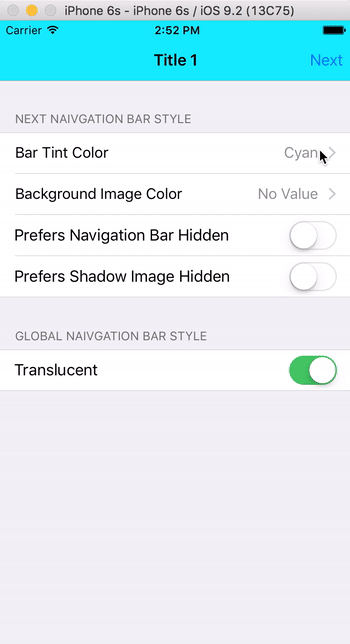📖
TableOfContentsSelector
Are you familiar with UITableView's sectionIndexTitles API? The little alphabet on the side of some tables for quickly jumping to sections? Here's a tutorial if not.
This is a view very similar to that (very little in the way of originality here, folks) but offers a few nice changes I was looking for, so I thought I'd open source it in case anyone else wanted it too.
Benefits
The UITableView API is great, and you should try to stick with built-in components when you can avoid adding in unnecessary dependencies. That being said, here are the advantages this brought me:
-
🐇 Symbols support! SF Symbols are so pretty, and sometimes a section in your table doesn't map nicely to a letter. Maybe you have some quick actions that you could represent with a lightning bolt or bunny! -
🌠 Optional overlay support. I really liked on my old iPod nano how when you scrolled really quickly an a big overlay jumped up with the current alphabetical section you were in so you could quickly see where you were. Well, added! -
🖐 Delayed gesture activation to reduce gesture conflict. For my app, an issue I had was that I had an optional swipe gesture that could occur from the right side of the screen. Whenever a user activated that gesture, it would also activate the section index titles and jump everywhere. This view requires the user long-press it to begin interacting. No conflicts! -
🏛 Not tied to sections. If you have a less straight forward data structure for your table, where maybe you want to be able to jump to multiple specific items within a section, this doesn't require every index to be a section. Just respond to the delegate and you can do whatever you want. -
🏓 Not tied to tables. Heck, you don't even have to use this with tables at all. If you want to overlay it in the middle of aUIImageViewand each index screams a different Celine Dion song, go for it. -
🏂 Let's be honest, a slightly better name. The Apple engineers created a beautiful API but I can never remember what it's called to Google.sectionIndexTitlesdoesn't roll off the tongue. -
🌝 Haha moon emoji
How to Install
No package managers here. Just drag and drop TableOfContentsSelector.swift into your Xcode project. You own this code now. You have to raise it as your own.
How to Use
Create your view.
let tableOfContentsSelector = TableOfContentsSelector()
(Optional: set a font. Supports increasing and decreasing font for accessibility purposes)
tableOfContentsSelector.font = UIFont.systemFont(ofSize: 12.0, weight: .semibold) // Default
The table of contents needs to know the height it's working with in order to lay itself out properly, so let it know what it should be
tableOfContentsSelector.frame.size.height = view.bounds.height
Set up your items. The items in the model are represented by the TableOfContentsItem enum, which supports either a letter (.letter("A")) case or a symbol case (.symbol(name: "symbol-sloth", isCustom: true)), which can also be a custom SF Symbol that you created yourself and imported into your project. As a helper, there's a variable called TableOfContentsSelector.alphanumericItems that supplies A-Z plus # just as the UITableView API does.
let tableOfContentsItems: [TableOfContentsItem] = [
.symbol(name: "star", isCustom: false),
.symbol(name: "house", isCustom: false),
.symbol(name: "symbol-sloth", isCustom: true)
]
+ TableOfContentsSelector.alphanumericItems
tableOfContentsSelector.updateWithItems(tableOfContentsItems)
At this point add it to your subview and position it how you see fit. You can use sizeThatFits to get the proper width as well.
Lastly, implement the delegate methods so you can find out what's going on.
func viewToShowOverlayIn() -> UIView? {
return self.view
}
func selectedItem(_ item: TableOfContentsItem) {
// You probably want to do something with the selection! :D
}
func beganSelection() {}
func endedSelection() {}
License
MIT




